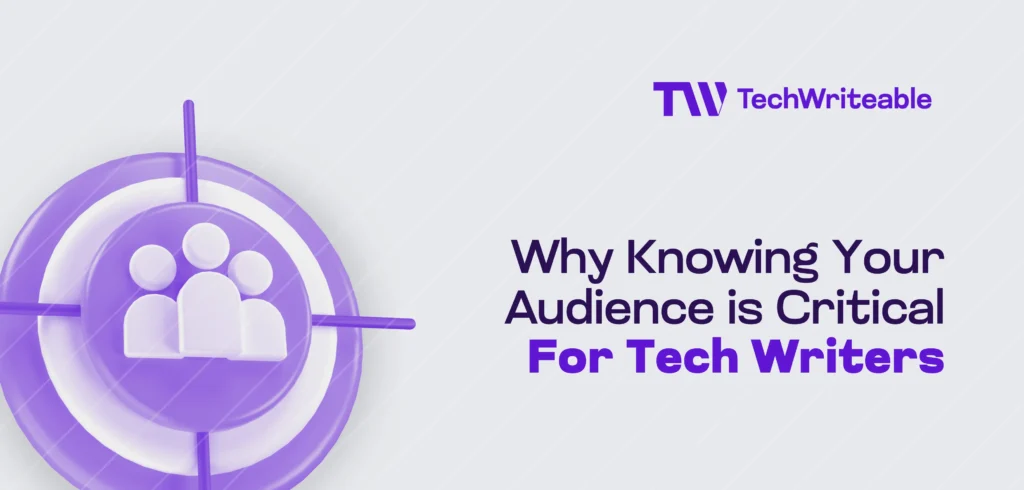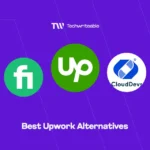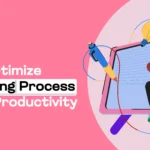From 2014 to 2021, the tech writing industry witnessed a 16.6% average annual growth. This Compound Annual Growth Rate (CAGR) has been stable since then, indicating that more people are becoming tech writers daily. While it is good news for the industry, it means more competition for you, an average tech writer.
This begs the big question: how do you stand out from this pool of tech writers? Perfect grammar, you may say. Others may add good communication skills, creativity, and critical thinking. They are all essential. However, they come second to knowing your audience, which this article discusses. Read on to learn how this simple fact can change and shape the course of your writing journey.
What is Audience Analysis?
Regarding tech writing, two things are of primary importance: the concept and your audience. The concept refers to the subject of interest, which you should understand to the core. Your audience, on the other hand, is readers, people to whom your document is tailored. They are the sole reason for your writing, and you want to ensure that the text suits their needs.
However, you’ll only be able to please them once you know them. This is why audience analysis is essential. Audience analysis is the discovery of characteristics specific to your target readers. It involves understanding who they are, what they do, their location, and their expectations from your document.
It can also be more comprehensive by learning their gender, age, social class, race, ethnicity, and language. Nevertheless, audience analysis aims to determine what distinguishes your audience and how to appeal to this difference.
Why is Audience Analysis Important?
A comprehensive audience analysis can benefit you in several ways. Some of these are:
1. Improve Marketing Strategies
Audience analysis allows you to create effective marketing strategies. If you understand their goals, purpose, and pain points, you can create content marketing campaigns that save time and money.
2. Increased Chances of Achieving Your Goals
Every technical document has a purpose and is part of a larger, more inclusive business strategy. As the tech writer, your document must be written to accomplish these goals.
Here’s an example. Suppose your goal is to convince executive A that product A is better than product Z. In that case, audience analysis will help you make comparisons that matter to the executive.
3. Creating Engaging Content
Knowing your type of audience can help you avoid the trap of overindulging and under-explaining specific topics. A well-curated audience analysis can help you understand which aspects to focus on.
For instance, if your audience is new to the subject, you should break down the concept to the simplest. However, if they are specialists, explaining every idea would be a good use of time.
Types of Audience
During your audience analysis, you’ll discover that your audience falls into one of these categories:
i. Non-Specialists
A non-specialist is someone you would call the layman of the industry. They need more technical knowledge but may need the document to achieve specific results.
ii. Executives
Executives make decisions regarding the need for a product or service. They are only a tad better than laypeople. Although they have enough knowledge to be in its business, they need more understanding of how it works.
iii. Technicians
This type of audience is responsible for building, operating, and maintaining the product involved. They have vast hands-on knowledge of the product’s design and are highly experienced.
iv. Experts
Experts know the whole concept. They built and designed these concepts and have studied them continuously. They often have academic degrees in the topics and have researched them.
Creating a Persona for Your Audience
Your audience analysis should birth a persona that is your go-to when writing. Your audience persona contains all the necessary information about your audience and will guide you in creating engaging content. Audience persona can be divided into three:
1. Demographics
When creating your audience persona, you should first gather demographic information on your audience. Demographic information includes age, gender, religion, location, ethnic background, and marital status.
2. Technical Background
In this section, you want to know your audience’s industry, career background, knowledge, and experience. This analysis helps you tailor your writing style to their understanding. It also guides you on how much information to include in the document and what to exclude. One thing to note here is that your audience’s technical background may vary. In this case, the majority takes precedence.
3. Interests
Now that you know your audience’s demographics and technical background, what interests them? This section analyzes their needs. It answers questions like what they need from the document. What will they use it for? Remember, these answers should align with the goals you hope to achieve from creating the document.
Here’s an example of what an audience persona for tech writers would look like.
| Name | Sarah Johnson |
| Age | 35 |
| Gender | Female |
| Location | San Francisco Bay Area, California, USA |
| Ethnic Background | Caucasian |
| Industry | Technology |
| Education | Bachelor’s degree in English Literature |
| Position | Senior Technology Writer |
| Experience | 5+ years in technical writing, specializing in software documentation for large tech companies. |
| Needs | Sarah needs access to the latest tools and resources for technical writing, including software documentation platforms, style guides, and industry standards. |
| Interests | Sarah is passionate about exploring innovative ways to convey complex technical information clearly and concisely. |
| Pain Points | Sarah often faces challenges translating highly technical concepts into user-friendly documentation catering to a diverse end-user audience. |
| Dreams | Sarah aspires to become a thought leader in the tech writing field, contributing articles to industry publications and speaking at major conferences. |
How to Adapt Your Writing to Your Audience
Your audience analysis gives you an in-depth understanding of your target readers. However, you are responsible for creating documents that resonate with them. Here are a few things you should keep in mind while doing that.
Remember Who Your Audience Is
As you write, you must constantly examine whether your writing matches your audience’s persona. Put yourself in the reader’s shoes and ask if the text appeals to you. Remember, it’s not just about conveying information. Your writing style must match your audience’s level of comprehension.
Customize Content for Various Audiences
In technology writing, one size never fits all. Each audience group requires a different approach, whether non-specialists, executives, technicians, or experts. If your audience persona covers a wide range of readers, you may need to create other documents. Clarity and simplicity are essential for non-specialists, while executives may need concise yet compelling arguments to support decision-making.
Address Specific Needs and Pain Points
Successful technology writers don’t just provide information; they address their audience’s needs and pain points. This could involve solving problems, achieving goals, or updating them on industry trends. If you still can’t do this after conducting your audience analysis, your analysis must be corrected.
Balance Depth and Breadth of Information
As a tech writer, you must balance the depth and breadth of information. Beginners may require comprehensive explanations of fundamental concepts. However, technicians or experts prefer succinct, to-the-point content that answers their questions. You must learn to balance this to adapt your writing to your audience.
Final Thoughts
At Techwriteable, our leading course empowers tech writers to advance in their careers. Therefore, we provide various tools and resources for your growth and a portfolio to show your expertise. Start here to learn how to maximize Techwriteable today.



